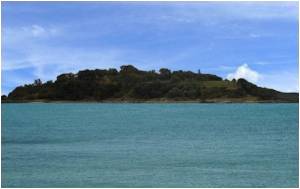An old man sits on the ground weaving a basket while another villager hangs out her washing to dry in a hilltribe settlement in the forest of northern Laos.

The 220,000-hectare national park is at the forefront of efforts by the landlocked, impoverished nation to become a leading eco-tourism destination -- an effort that appears to be paying off.
Lured by the wild beauty and cultural riches of the numerous ethnic minorities, almost 250,000 tourists visited northwest Luang Namtha province in 2010, up from 20,000 in 1999, according to the Laos tourism administration.
"Compared to Thailand it is definitely a lot more authentic, better run and the fact that we were just a small group, just four people, makes it a much more genuine experience," said 28-year-old British tourist Joe Park.
"We perhaps leave less of a footprint and not too much of our own culture in the area, so I think it was fantastic," he said during a trek inside the park.
While some ethnic villagers, such as the Lanten, still wear their indigo traditional clothes, they make no particular effort to dress up for tourists and go about their normal lives as much as possible when they come.
Advertisement
After opening up to foreign visitors in the 1990s, Laos "quickly saw that being a country in the middle of the Mekong region, with many visitors going to the surrounding countries, that it would be a good opportunity to develop the economy and create local jobs," said Steven Schipani, who was involved in the Nam Ha ecotourism project as a UN advisor.
Advertisement
The Laotian authorities, who have created 20 national parks covering 14 percent of the country, attempted to manage the explosion in tourism so as to avoid queues of coaches or rows of concrete hotels.
"Laos will become a world renowned destination specialising in forms of sustainable tourism that, through partnership and cooperation, benefits natural and cultural heritage conservation and local socio-economic development, and spreads knowledge of Laos' unique cultural heritage around the world," proclaims the state run website www.ecotourismlaos.com.
The Nam Ha national park, thanks to a partnership with UNESCO dating back to 1999, has served as a model of development for ecotourism aimed at benefitting local communities.
"Before, only backpackers, who often only rent a motorbike and drive around, not stopping in the villages, came to Namtha," said Adrian Schuhbeck, a development expert with a German-backed agency in Luang Namtha province.
"But this is changing. People with more money come, which is good for the communities -- they get more return."
Thanks to the Nam Ha project, several dozen villages have signed agreements with local trekking agencies to supply guides, maintain the paths, share their traditional cuisine and offer a roof for the night, no more than twice a week.
For welcoming eight tourists -- the maximum allowed in a single group -- on a two-day trek, a village receives about $135, or more than a third of the ticket price, said Chittaphong Chanthakhoune, a local tour agent.
Hundreds of similar projects are being set up elsewhere in the sparsely populated country, one of the poorest in the world.
While it is not the answer to all the villages' problems, Laos has at least avoided the pitfalls seen by its neighbours, where tour operators bring hordes of tourists to villages without consulting the locals.
Signs on the walls of local trekking agencies give advice to foreigners: take off your shoes before entering a home, respect sites of worship and do not take photographs without asking the subject's permission.
The villagers for their part have been educated about the needs of their visitors and ways to improve hygiene.
While it lures avid adventurers to its steep-sided valleys and villages lost in the middle of the forest, Laos has also equipped its capital Vientiane and the ancient city of Luang Prabang with a solid tourism infrastructure, capable of accommodating a rising number of visitors.
Tourist arrivals in the Communist nation have risen from scarcely 5,000 in 1991 to more than two million in 2009, according to official figures.
But the eco-tourism boom "will only be sustainable if both sides understand what is important for each other," said Schuhbeck.
Source-AFP








